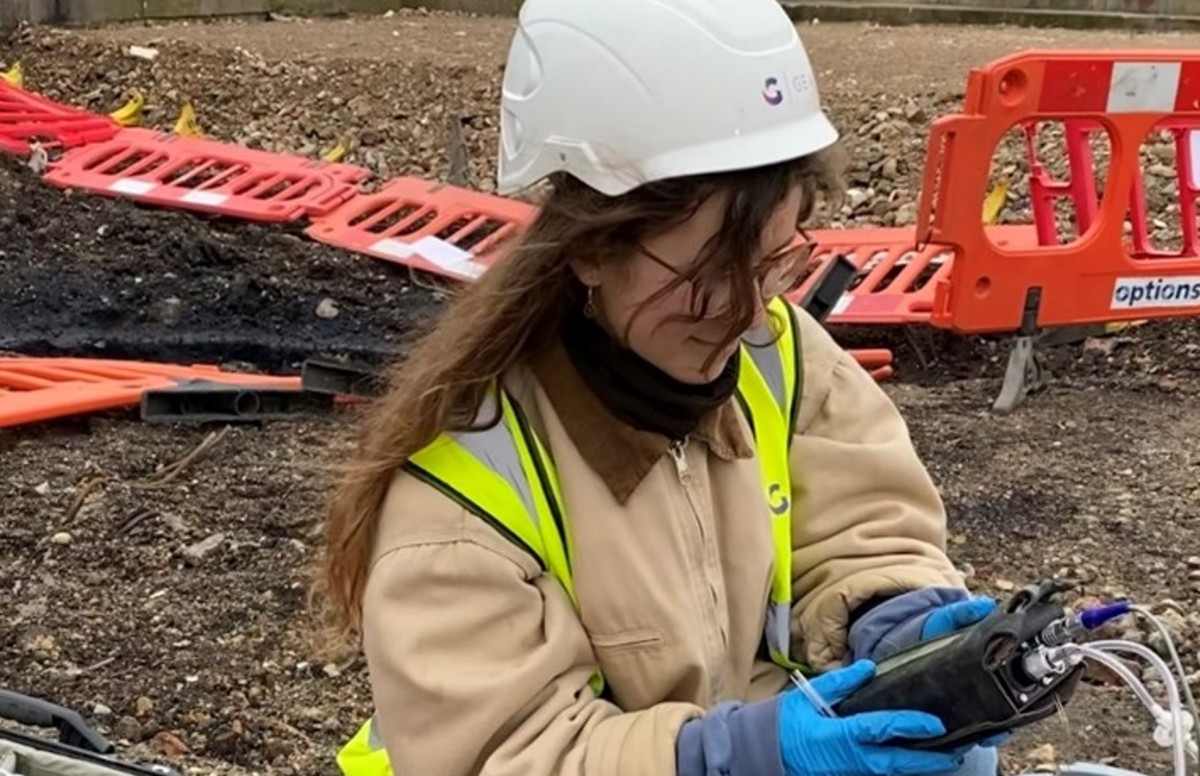Geotheta - Questions
Geotheta - Questions
Blog Article
What Does Geotheta Mean?
Table of ContentsThe Basic Principles Of Geotheta An Unbiased View of GeothetaNot known Facts About GeothetaUnknown Facts About Geotheta
They work together with civil engineers, architectural engineers, engineers, and various other specialists to incorporate geotechnical factors to consider right into the total job style and building procedure. This calls for reliable synergy, control, and interaction to guarantee that the geotechnical aspects align with the task objectives and meet regulatory demands.Mining & Materials Design: Concepts of boring, penetration prices, and factors influencing the option of exploration approach. Characteristics of nitroglycerins, shooting systems and blast patterns. Blowing up techniques in surface and below ground functions. Special blowing up strategies at excavation boundaries. Vibration and sound control. Mechanical and continual techniques to fragmentation, including longwall shearing and fullface boring.
Modelling of piece and particle dimension distributions; comminution as a transfer function. Comminution technology: crushing, grinding, dimension category. Integrated analysis of fragmentation and comminution procedures. Provided by: Mining & Products Engineering.
Geotheta Fundamentals Explained
Bachelor's level programs in civil, geotechnical, geological, and environmental design usually last 4 years and include basic education programs in English, social scientific research, and the humanities, in addition to courses in sophisticated maths, architectural geology, and liquid mineralogy. (https://gravatar.com/exactlypainterdeb7b76e1a)
Geotechnical engineering includes the assessment of the dirt and rock problems at a specific website, and their effects for the development of that site. As a lot of frameworks count on the ground for assistance, it lacks shock that a comprehensive understanding of the ground conditions, and the viability of structure systems, are vital to the long-term stability and efficiency of the structure or framework.
Being experts in the investigation of geological developments and ground behaviour, geotechnical engineers do clinical investigations and testing to recognize the impact these geological formations may have on the layout and building and construction of structure, civil and infrastructure projects. This know-how is crucial for the design and building and construction of buildings, roads, passages, dams, bridges, and supply of water and sewer system.
The geotechnical group at Douglas Allies consistently seek advice from engineers, style designers, designers, and building contractors to make referrals on layout and advancement propositions to make certain that the constructed frameworks are accordingly made for the ground problems. As an example, the style of footing systems needs to consider the weight of the framework, the capacity of the ground to support that weight along with activity resistances and effective building.
The 2-Minute Rule for Geotheta
This task is greatly streamlined by the use our Douglas Map geospatial platform that makes this information easily accessible in a very easy to use internet internet browser interface. A geotechnical engineer will certainly guide the exploration of boreholes and test pits to accumulate soil and other examples, and also examine surface functions and ground exposures to create a geotechnical model of the subsurface conditions.
Depending on the job type and ground conditions encountered, research laboratory testing may to name a few things evaluate strength, compressibility, reactivity and/or leaks in the structure of soil and rock examples. Hereafter data is accumulated and looked at, the results are made use of for a geotechnical model of the site, which is typically provided as areas throughout the website.

A geotechnical investigation by nature can only analyze the ground problems at the places pierced or dug deep into. All-natural variations in dirt and rock problems can take place across a website and in between examination areas. It is therefore good method that the geotechnical engineer be maintained throughout building and construction of the project to offer on-site verification that the ground conditions come across follow the expectations and guidance given in the geotechnical investigation record.
The Buzz on Geotheta
Geotechnical engineers use their extensive expertise of dirt and rock to examine danger and solve problems on varied facilities projectsGeotechnical engineering is a specialist branch of civil engineering which takes a look at the behaviour of planet materials and the application of soil and rock technicians. Engineer of Record. As a geotechnical designer, you will certainly evaluate the physical, mechanical and chemical residential or commercial properties of soil and rock in order to develop foundations, preserving structures and earthworks
Geotechnical design is closely connected to and overlaps with, both engineering geology and ground engineering - https://www.evernote.com/shard/s342/sh/0ddde0a2-417b-669e-3d11-8f53bf2073ba/dxCfPcosgpFcDl9WAXonEVeNbxWt1i_y0aMcgTcK_KXcXyxfIS3apQYAgA. It's feasible to be experts in geotechnics or benefit a geotechnical firm however be understood as an engineering rock hound or a ground designer. As a geotechnical designer, you'll need to: construct and keep connections with clients and various other experts included in the site, throughout each projectmaintain security requirements on site be mindful of cost ramifications when you make recommendationsstudy geological maps and airborne pictures from a variety of sources and from various time periodsexamine building prepares to see how viable they are based on your understanding of the siteinvestigate threats or geological dangers for the sitesearch for environmentally sensitive functions, such as land fill begin to create accurate and interpretive ground modelsplan area investigationsdrill and evaluate examples of bedrock, dirt, groundwater and extra materials supervise other specialists on sitesolve technical issues as they develop, such as unforeseen frameworks at drill sitesmonitor conditions throughout and after construction to ensure frameworks are secure in the brief and long termadding information collected on site to your first researchcreating geotechnical computations, drawings, and 2 or three-dimensional computer system designs translating the datamaking recommendations regarding the proposed usage of the site

Report this page